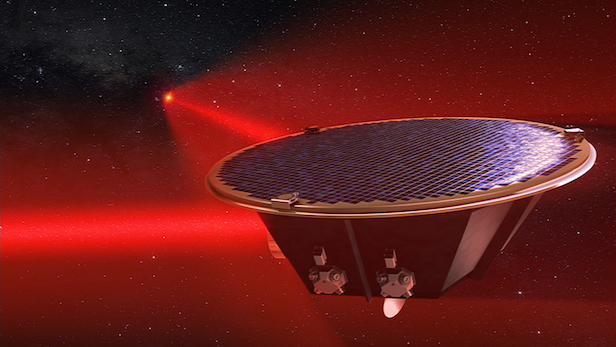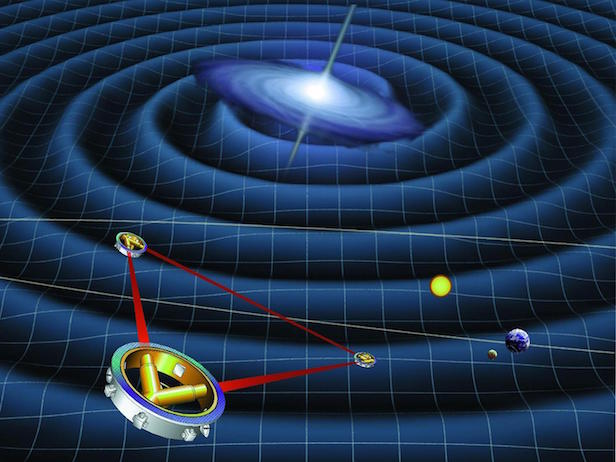Gravitational waves mission slated for launch in 2034
ESA and NASA have green lit the LISA mission, striving to uncover the secrets of the ripples in the fabric of space-time

This space-based observatory will take gravitational wave detection to a whole new level. Image credit: AEI/Milde Marketing/Exozet
The European Space Agency (ESA) has selected the Laser Interferometer Space Antenna (LISA) for their third large-class mission in their Cosmic Vision program. The mission will consist of three spacecraft dedicated to studying gravitational waves, and shall be designed, budgeted, constructed and launched by both ESA and NASA in partnership.
In September 2015, the Laser Interferometer Gravitational-Wave Observatory (LIGO) first discovered gravitational waves, the ripples in space-time that emanated from a merger of two stellar-mass black holes. On 1 June 2017, a third detection of gravitational waves emitted from a black hole merger 1.3 billion light years away, thus confirming that this is more than just a theory.
Although LIGO is making groundbreaking observations, it has its limitations, including seismic, thermal and other interference noise, setting the highest frequency of detection to 100 cycles per second (hertz). These signals are not sensitive enough to detect a more powerful event, for example, when galaxies collide and the central supermassive black holes at their centres merge. So the only way to gain a higher level of sensitivity is to launch a mission into space.

Each spacecraft will contain freely falling “proof masses”, protected from all other forces except for gravity. Image credit: NASA
When in Earth orbit, the LISA trio will be set up in a triangular formation, with a distance of 2.5 million kilometres (1.6 million miles) between each one. The lasers will constantly measure the distance between the three spacecraft, and if changes in the distances occur, this could be a signal of gravitational waves.
This will provide a stable system, capable of reaching frequencies lower than one hertz and is more superior to LIGO. This level of sensitivity will be capable of detecting the merging of supermassive black holes. Its capabilities may also detect gravitational waves originating from binary systems of neutron stars, or even space-time ripples from the early history of the universe.
This announcement comes after the success of the LISA Pathfinder mission, proving it’s possible to sustain a mission of this calibre. The Pathfinder mission was launched in 2016, and within its first two months, surpassed the mission requirements and later reached the sensitivity required for the full multi-spacecraft observatory.
Keep up to date with the latest space news in All About Space – available every month for just £4.99. Alternatively you can subscribe here for a fraction of the price!




